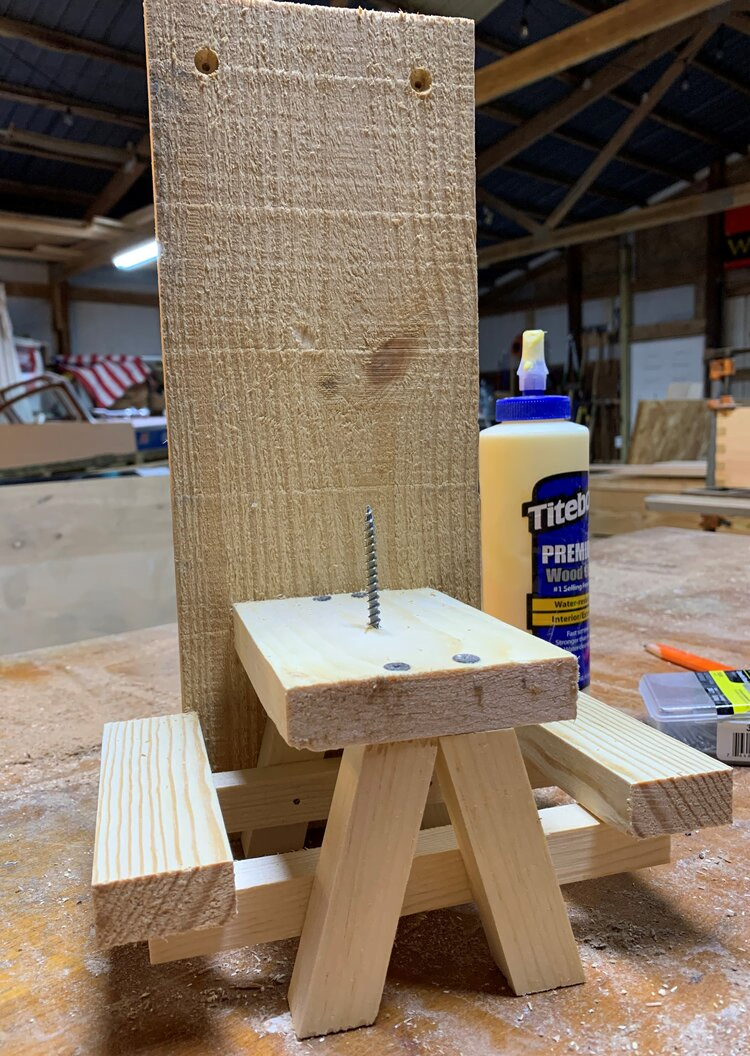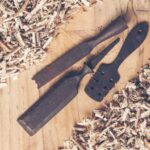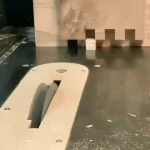Are you wondering how to remove tape residue from woodwork? It can be frustrating to see leftover gunk on your beautiful wood surfaces after removing tape. Whether it’s from DIY projects, painting, or just general wear and tear, tape residue can be a challenge to tackle. In this article, we will provide you with the knowledge and tools needed to effectively remove tape residue from your woodwork.
Tape residue comes in different types and properties, making it essential to understand what you are dealing with before attempting to remove it. Knowing the right approach for each type of residue is crucial for preventing any damage to your woodwork during the removal process.
Using the right tools and materials is key when removing tape residue from woodwork. From gentle solvents to specialized cleaning products and abrasive tools, having the correct supplies at hand will make the removal process smoother and more effective.
Understanding the Different Types of Tape Residue and Their Properties
When it comes to removing tape residue from woodwork, it’s important to understand the different types of tape residue and their properties in order to effectively eliminate them without causing any damage. There are various types of tape residue, including adhesive-based residue, rubber-based residue, and plastic-based residue. Each type requires a different approach for removal.
Adhesive-based residue is one of the most common types found on woodwork. It is usually left behind by masking tape or duct tape and can be challenging to remove if not addressed promptly. Rubber-based residue, often left behind by electrical tape, has a sticky and gooey texture that can be particularly stubborn. Plastic-based residue, typically from packing or vinyl tapes, can harden over time and become difficult to remove.
To remove adhesive-based residue from woodwork, you can use common household items such as rubbing alcohol or vinegar to break down the adhesive. For rubber-based residue, try using a citrus-based solvent or a commercial adhesive remover. Plastic-based residue may require the use of heat from a hairdryer or hot water to soften it before attempting removal.
It’s important to always test any cleaning solution on an inconspicuous area of the woodwork first to ensure that it does not cause any damage. Additionally, using gentle scraping tools such as plastic scrapers or credit cards can help lift the softened residue without scratching the wood surface.
| Type of Tape Residue | Recommended Removal Method |
|---|---|
| Adhesive-based | Rubbing alcohol or vinegar |
| Rubber-based | Citrus-based solvent or commercial adhesive remover |
| Plastic-based | Heat (hairdryer) or hot water |
Tools and Materials Needed for Removing Tape Residue From Woodwork
Basic Tools and Materials
To effectively remove tape residue from woodwork, you will need a few basic tools and materials. These include rubbing alcohol, white vinegar, a microfiber cloth, a plastic putty knife, and a gentle adhesive remover. These items are essential for safely removing the residue without damaging the wood surface.
Specialized Tools and Materials
In some cases, stubborn tape residue may require specialized tools and materials for removal. A heat gun or hairdryer can be useful for softening the adhesive, making it easier to scrape off. Additionally, commercial adhesive removers specifically designed for wood surfaces can also be helpful in more challenging situations.
Protective Gear
When working with chemical-based adhesive removers, it is important to ensure proper ventilation in the work area. Additionally, wearing gloves and protective eyewear can prevent skin irritation and accidental contact with eyes. Always read the labels and follow safety precautions when using any chemicals to remove tape residue from woodwork.
Step-by-Step Guide on How to Remove Tape Residue From Woodwork
Removing tape residue from woodwork can be a frustrating task, but with the right tools and techniques, it is possible to restore the natural beauty of your wood surfaces. Here is a step-by-step guide on how to effectively remove tape residue from woodwork.
Gather Your Materials
Before you begin, make sure you have the necessary tools and materials on hand. You will need a clean cloth, rubbing alcohol or vinegar, a plastic scraper or credit card, and a commercial adhesive remover if the residue is particularly stubborn. It’s important to test any chemical or solvent on an inconspicuous area of the woodwork first to ensure it does not cause damage.
Pre-Treatment
Start by gently scraping off as much of the tape residue as possible using the plastic scraper or credit card. Be careful not to scratch or gouge the wood surface. Once you have removed as much residue as possible, apply rubbing alcohol or vinegar to a clean cloth and gently rub the remaining residue. Allow the alcohol or vinegar to sit for a few minutes to help dissolve the adhesive.
Final Cleaning
After pre-treatment, wipe down the woodwork with a clean, damp cloth to remove any remaining residue and cleaning solution. If there are still traces of tape residue left, consider using a commercial adhesive remover following the manufacturer’s instructions. Once all residue has been removed, thoroughly dry the woodwork with a clean cloth.
By following these step-by-step instructions and being patient with the process, you can effectively remove tape residue from your woodwork and restore its natural beauty.
Tips and Tricks for Tackling Stubborn Tape Residue
Removing tape residue from woodwork can be a challenging task, especially when the residue has become stubborn and difficult to remove. However, there are several tips and tricks that you can use to effectively tackle stubborn tape residue without causing damage to the woodwork.
One effective method for removing stubborn tape residue from woodwork is to use a combination of heat and gentle scraping. You can use a hairdryer to apply heat to the affected area, which will help soften the adhesive of the tape residue. Once the adhesive becomes soft, you can carefully scrape it off using a plastic putty knife or an old credit card. Be sure to work gently to avoid scratching or damaging the surface of the woodwork.
Another useful tip for tackling stubborn tape residue is to use a solvent or adhesive remover specifically designed for use on wood surfaces. Before using any solvent or adhesive remover, it is important to test it on a small, inconspicuous area of the woodwork to ensure that it does not cause any damage or discoloration.
Apply the solvent or adhesive remover according to the manufacturer’s instructions and use a soft cloth or sponge to gently scrub away the softened residue.
In addition, if you are dealing with particularly stubborn tape residue on your woodwork, you can also try using natural remedies such as olive oil or mayonnaise. Simply apply a small amount of olive oil or mayonnaise to the affected area and let it sit for a few minutes before gently wiping it away with a soft cloth. These natural oils can help to break down the adhesive in the tape residue, making it easier to remove.
| Tackling Stubborn Tape Residue Tips | Description |
|---|---|
| Use Heat and Gentle Scraping | Softening adhesive with a hairdryer and scraping off with a plastic putty knife |
| Use Solvent or Adhesive Remover | Testing on small area first then applying according to instructions |
| Try Natural Remedies | Applying olive oil or mayonnaise and wiping it away after a few minutes |
Preventative Measures to Avoid Tape Residue on Woodwork in the Future
When it comes to maintaining the natural beauty of your woodwork, prevention is key. Taking proactive measures to avoid tape residue can save you time and effort in the long run. Here are some tips on how to prevent tape residue from occurring on your woodwork:
1. Choose the right type of tape: Not all tapes are created equal. When working with wood, opt for low-adhesive or specially designed painter’s tape that is less likely to leave behind sticky residue.
2. Test a small area first: Before using any type of tape on your woodwork, it’s important to test a small, inconspicuous area first to see how the surface reacts. This will help you avoid any surprises when it comes time to remove the tape.
3. Clean the surface beforehand: Ensure that the surface of the woodwork is clean and dry before applying any tape. Dust, dirt, or moisture can affect the adhesion of the tape and increase the likelihood of residue being left behind.
By following these preventative measures, you can minimize the risk of tape residue on your woodwork and preserve its natural beauty for years to come.
Remember, taking precautions beforehand can save you from having to figure out how to remove tape residue from woodwork later on. It’s always best to be proactive in protecting your wood surfaces from damage and unsightly residue.
Common Mistakes to Avoid When Removing Tape Residue From Woodwork
When removing tape residue from woodwork, it’s important to approach the process with care and attention to avoid making common mistakes that could potentially damage the wood. Here are some common mistakes to avoid:
1. Using harsh chemicals: One common mistake when trying to remove tape residue from woodwork is using harsh chemicals that can cause discoloration or damage to the wood. Instead, opt for gentle cleaning solutions such as warm soapy water or vinegar.
2. Scrubbing too aggressively: Another mistake people often make is scrubbing too aggressively in an attempt to remove stubborn tape residue. This can result in scratches on the wood surface, ruining its appearance. Instead, use a soft cloth or sponge and apply gentle pressure when rubbing the residue.
3. Neglecting to test a small area first: Before applying any cleaning solution or method to remove tape residue from woodwork, it’s crucial to test a small, inconspicuous area first. This will help you determine whether the method is safe and effective for your specific type of wood.
By being mindful of these common mistakes and taking the necessary precautions, you can successfully remove tape residue from woodwork without causing any harm to its natural beauty.
- Avoid using harsh chemicals
- Be cautious when scrubbing
- Always test a small area first
Final Thoughts
In conclusion, removing tape residue from woodwork can be a frustrating task, but with the right tools and techniques, it is entirely achievable. By understanding the different types of tape residue and their properties, you can choose the best method for removal. Using simple household items such as vinegar, rubbing alcohol, or even a hairdryer can effectively remove tape residue without damaging the wood.
Following a step-by-step guide and utilizing tips and tricks for tackling stubborn tape residue will ensure that your woodwork is restored to its natural beauty. Additionally, taking preventative measures such as using low-residue tapes or applying a protective finish on the woodwork can help avoid future tape residue issues.
It is important to note that in the process of removing tape residue from woodwork, common mistakes such as using abrasive materials or harsh chemicals should be avoided. These mistakes can cause damage to the wood and make the situation worse.
By being patient and using gentle methods, you can successfully remove tape residue without causing any harm to your woodwork. Overall, restoring the natural beauty of your woodwork by removing tape residue is absolutely achievable with the right knowledge and approach.
Frequently Asked Questions
How Do You Get Sticky Tape Residue Off Wood?
To remove sticky tape residue off wood, you can try using a mixture of warm water and mild dish soap. Gently rub the solution onto the residue with a soft cloth or sponge, then wipe it clean with a damp cloth.
How Do You Remove Sticky Residue From Wood Trim?
Removing sticky residue from wood trim can be done by using a hairdryer to soften the adhesive, and then carefully scraping it off with a plastic putty knife. Afterward, you can clean any remaining residue with rubbing alcohol or an adhesive remover.
How Do You Remove Adhesive From Wood Without a Damaging Finish?
When removing adhesive from wood without damaging the finish, consider using natural products like olive oil or coconut oil to loosen the adhesive. Gently rub the oil onto the affected area and let it sit for a few minutes before wiping it away – this should help to avoid any damage to the wood’s finish.

Hi everyone! I’m a woodworker and blogger, and this is my woodworking blog. In my blog, I share tips and tricks for woodworkers of all skill levels, as well as project ideas that you can try yourself.





